Question of the Week Number 1: July 22, 2021
“How can I tell the difference between dallisgrass, Johnsongrass and crabgrass? The controls, I understand, are all different.”
Let me boil it all down by putting the facts into bullets for each of the three weeds.
Dallisgrass…
• Perennial (comes back from its roots).
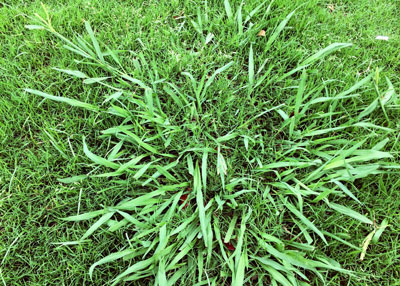
• Forms very dense clumps that are 10-16 inches across. No runners (stems that trail across the lawn).
• Extremely dark green leaves that grow to 5 or 6 inches tall if never mowed.
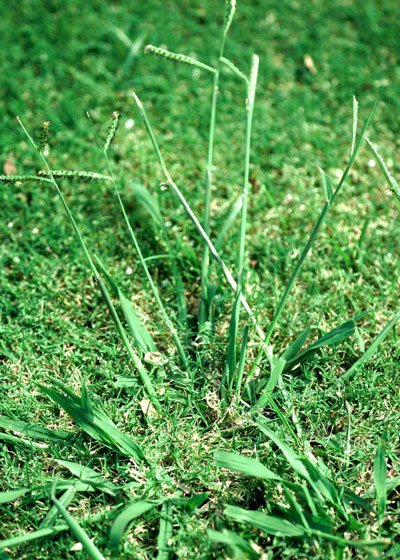
• Seed stalks form within 2-3 days of mowing.
• Stalks look like old-fashioned telephone pole crossarms, each bearing dozens of flattened, disk-like green seeds. Each seed is marked with a black peppery piece of chaff.
• All dallisgrass seeds are fertile, even without pollination, so it is critical that the lawn be mowed often to keep seeds from maturing.
• To control dallisgrass you’ll either have to dig it out by hand or use a one-gallon milk jug with the bottom cut out. Insert a spray wand through the lid into the jug. Place the jug firmly over the clump and spray a glyphosate-only herbicide onto the dallisgrass. The jug will prevent drift onto desirable grass adjacent, and the glyphosate will not contaminate the soil.
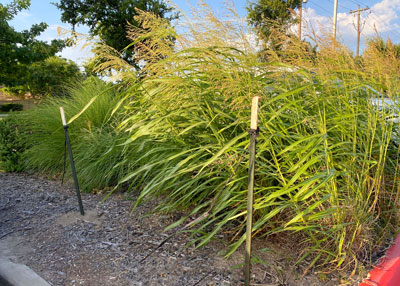
Johnsongrass…
• Perennial weed that is much more common in ditches and alleys than in cultivated lawns and gardens. It cannot stand frequent close mowing.
• Leaves are light green, often with a reddish cast along midribs.
• Flower stalks are robust, to 18 to 48 inches tall and borne in plumes.
• Clumps develop strong, finger-sized roots that are difficult to hoe or dig out. It’s best to rototill as you prepare garden soil, then use a rake to “comb” them out.

• Johnsongrass is rarely a problem in home lawns. It cannot withstand close mowing. It should give up and die out within a couple of months. No herbicide action is usually required.
Note: Both dallisgrass and Johnsongrass are easily eliminated with glyphosate-only sprays in open spaces.
Crabgrass…
• Annual weed that germinates in spring and summer and completes its life cycle by frost. It is, therefore, a “warm-season” weed.
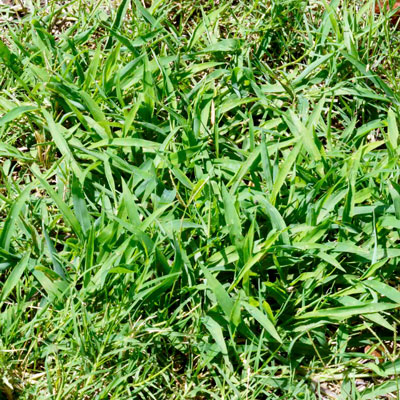
• Medium-green leaves. Short runners (4-5 inches long).
• Seedheads look like helicopter rotors.
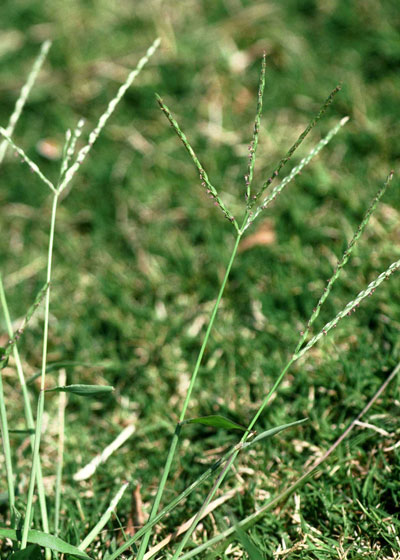
• Only consumer remedy is pre-emergent granules applied before the seeds start to sprout in early spring. Exact timing will depend on where you are in Texas, but first treatment generally should be 2-3 weeks prior to the average date of your last killing freeze in early spring. Repeat 90 days later. Apply Dimension, Halts or Balan granules at those times.
• Once crabgrass is up and growing there is no post-emergent herbicide that will kill it without harming your desirable permanent turf.
